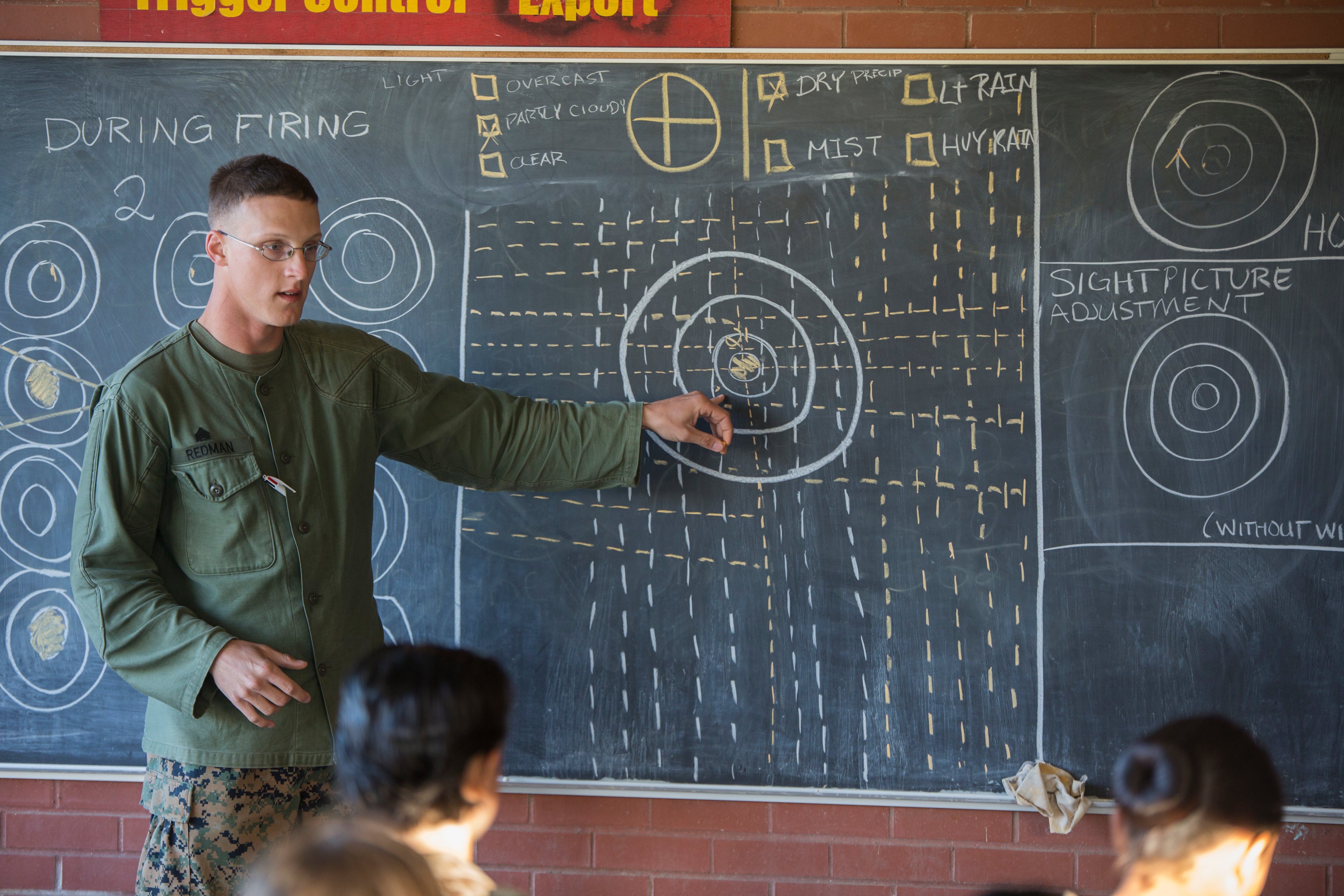Marines will see changes in marksmanship and weapons gear coming down the line this year, including the phasing out of legacy M16 iron sights and the three-point sling.
Marine officials On Feb. 29, the Corps announced annual changes to the Corps' its combat marksmanship program last week based on recommendations from a gathering of key decision makers aboard Marine Corps Base Quantico, Virginia, last October.
The results of this symposium's results were detailed broadcast in two Marine administrative messages, 112/16 and 113/16. The first spelled out how the service will Corps seeks to streamline its marksmanship program. The second listed authorized weapons and gear for all Marines.
While the changes are not as dramatic as those from last year's symposium, they mark a continuation of the Corps' drive toward greater efficiency and lethality under the "every Marine a rifleman" mentality.
Here's a look at the most-notable changes.
Weapons and gear
The Marine Corps will finally phase out the legacy iron sights, carrying handle and three-point sling for the M16 rifle.
While the The iconic M16 iron sights and handles will still be authorized, the Marine Corps will anticipates gradually deplete working out its existing stocks through attrition.
The legacy iron sights will be increasingly replaced with by micro backup iron sights, which are modular attachments that can be affixed to a rifle’s rail mount and flipped up for use.
But the Corps will still need to train Marines to use iron sights in fundamental marksmanship should the rifle combat optic’s red dot go dead, said Kyle Lamb, a weapons consultant through his company Viking Tactics who retired from the Army’s Delta Force after 15 years.
"It's sad to see the iron sights go," he said. "The Marine Corps takes marksmanship seriously. If you need [the micro iron sights], you need them; just flip them up and you're good to go."
The clumsy three-point rifle sling will also still be authorized, but will fall out from inventories in favor of a two-point common weapons sling.
The two-point sling allows greater flexibility to shooters, doubling as a firing aid and carrying strap, said Lamb, who supplies them to Marine Corps Forces Special Operations Command via his company.
"It's something the services have needed to do across the board for years," he said. "The three-point sling doesn't have any ability against the body, to tighten while wearing or shooting prone."
Additional These are additional authorized gear includes:
- M7 Rifle Combat Optic with horseshoe dot reticle pattern for the M16A4 and M4 rifles
- Special Operations Peculiar Modification, or SOPMOD, buttstock assembly for the M16A4, M4, M4A1 and M27 rifles
- M9A1 pistol holsters with light for left- and right-handed shooters
On the range
Another big One of the biggest potential changes to come out of the marksmanship symposium is a request for the Corps to take a look at converting firing ranges from yards to meters.
According to MARADMIN 112/16, Marine Corps Combat Development and Integration directed Training Command to conduct a cost-benefit analysis of converting known distance ranges to the global measuring standard.
For generations of Marines accustomed to shooting in yards, this could mean changing how they gauge distance on the firting range.
Lamb doesn’t see this as a bad thing, however.
"If you train to think in meters, you’re able to be ahead of the ballgame," he Lamb said. "Marines may be shooting in yards, but everything in the Corps is already in meters."
Marines already think in terms of "klicks," he said, and mils, so the conversion might ultimately streamline how they think about distance.
Combat rifle and pistol marksmanship program
Officials at CD&I Marine Corps Combat Development and Integration also asked Weapons Training Battalion at Quantico to look at developing a new training table for the Marine Corps’ marksmanship program.

A primary marksmanship instructor with Weapons and Field Training Battalion teaches marksmanship fundamentals to recruits at Marine Corps Recruit Depot Parris Island, S.C.
Photo Credit: Pfc. Carlin Warren/Marine Corps
Table seven would set the standard for engaging moving threats, both during live-fire training and in simulations.
Details have yet to be announced but if adopted, it would follow sweeping changes made to Marines' rifle marksmanship training tables over the last year.
A Corps-wide message Maradmin 132/15 issued last March merged eight skills tables into four to create six specific courses of fire.
Matthew L. Schehl covers training and education, recruiting, West Coast Marines, MARSOC, and operations in Europe, Africa and the Middle East for Marine Corps Times. He can be reached at mschehl@marinecorpstimes.com.




